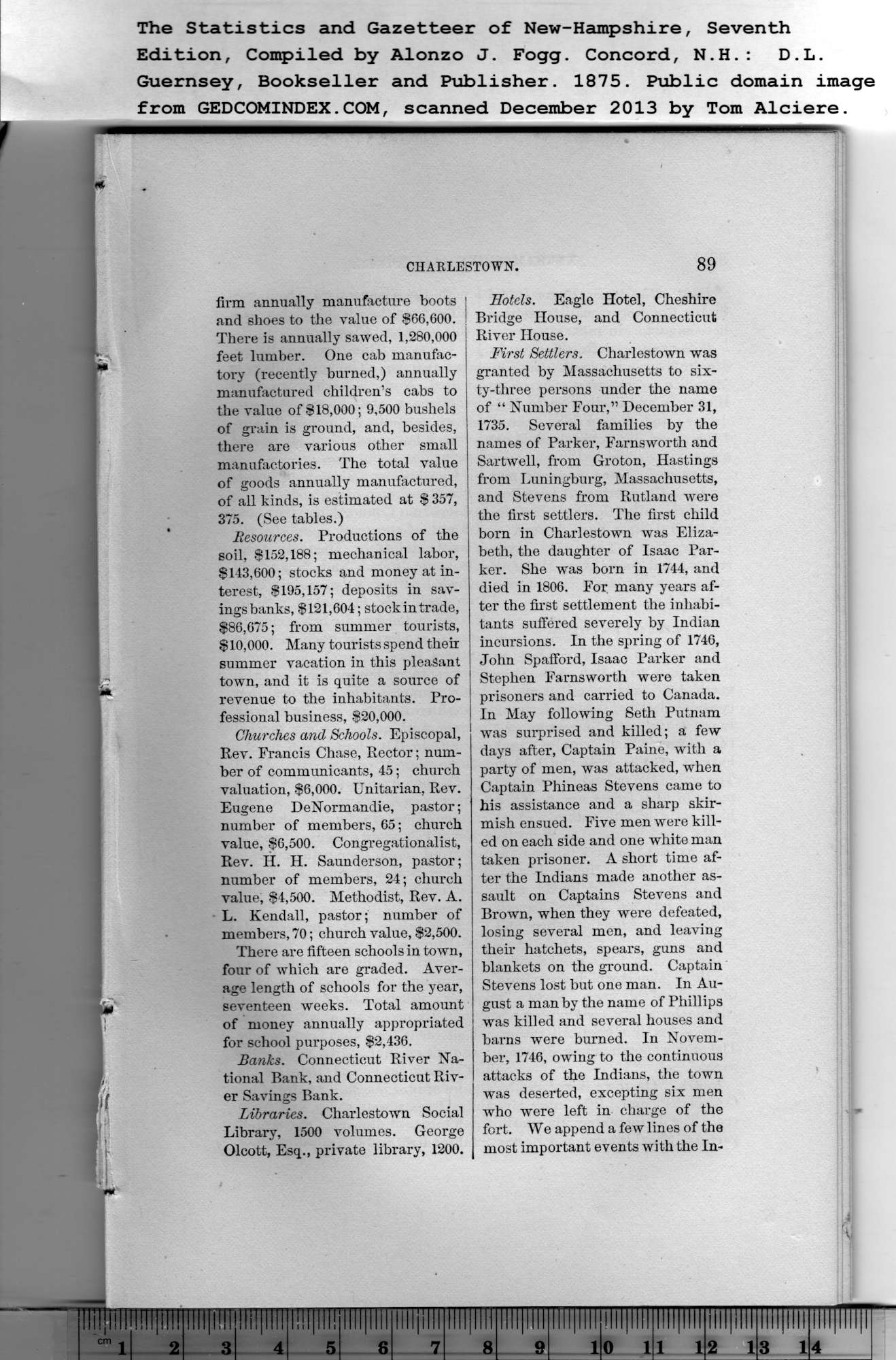|
firm annually manufacture boots
and shoes to the value of $66,600.
There is annually sawed, 1,280,000
feet lumber. One cab manufac-
tory (recently burned,) annually
manufactured children’s cabs to
the value of $18,000; 9,500 bushels
of grain is ground, and, besides,
there are various other small
manufactories. The total value
of goods annually manufactured,
of all kinds, is estimated at $ 357,
375. (See tables.)
Resources. Productions of the
soil, $152,188; mechanical labor,
$143,600; stocks and money at in-
terest, $195,157; deposits in sav-
ings banks, $121,604; stock in trade,
$86,675; from summer tourists,
$10,000. Many tourists spend their
summer vacation in this pleasant
town, and it is quite a source of
l'evenue to the inhabitants. Pro-
fessional business, $20,000.
Churches and Schools. Episcopal,
Rev. Francis Chase, Rector; num-
ber of communicants, 45; church
valuation, $6,000. Unitarian, Rev.
Eugene DeNormandie, pastor;
number of members, 65; church
value, $6,500. Congregationalist,
Rev. H. H. Saunderson, pastor;
number of members, 24; church
value, $4,500. Methodist, Rev. A.
L. Kendall, pastor; number of
members, 70; church value, $2,500.
There are fifteen schools in town,
four of which are graded. Aver-
age length of schools for the year,
seventeen weeks. Total amount
of money annually appropriated
for school purposes, $2,436.
Banks. Connecticut River Na-
tional Bank, and Connecticut Riv-
er Savings Bank.
Libraries. Charlestown Social
Library, 1500 volumes. George
Olcott, Esq., private library, 1200. |
Hotels. Eagle Hotel, Cheshire
Bridge House, and Connecticut
River House.
First Settlers. Charlestown was
granted by Massachusetts to six-
ty-three persons under the name
of “ Number Four,” December 31,
1735. Several families by the
names of Parker, Farnsworth and
Sartwell, from Groton, Hastings
from Luningburg, Massachusetts,
and Stevens from Rutland were
the first settlers. The first child
born in Charlestown was Eliza-
beth, the daughter of Isaac Par-
ker. She was born in 1744, and
died in 1806. For many years af-
ter the first settlement the inhabi-
tants suffered severely by Indian
incursions. In the spring of 1746,
John Spafford, Isaac Parker and
Stephen Farnsworth were taken
prisoners and carried to Canada.
In May following Seth Putnam
was surprised and killed; a few
days after, Captain Paine, with a
party of men, was attacked, when
Captain Phineas Stevens came to
his assistance and a shai'p skir-
mish ensued. Five men were kill-
ed on each side and one white man
taken prisoner. A short time af-
ter the Indians made another as-
sault on Captains Stevens and
Brown, when they were defeated,
losing several men, and leaving
their hatchets, spears, guns and
blankets on the ground. Captain
Stevens lost but one man. In Au-
gust a man by the name of Phillips
was killed and several houses and
barns were burned. In Novem-
ber, 1746, owing to the continuous
attacks of the Indians, the town
was deserted, excepting six men
who were left in charge of the
fort. We append a few lines of the
most important events with the In- |
